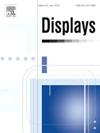BGFlow: Brightness-guided normalizing flow for low-light image enhancement
IF 3.7
2区 工程技术
Q1 COMPUTER SCIENCE, HARDWARE & ARCHITECTURE
引用次数: 0
Abstract
Low-light image enhancement poses significant challenges due to its ill-posed nature. Recently, deep learning-based methods have attempted to establish a unified mapping relationship between normal-light images and their low-light versions but frequently struggle to capture the intricate variations in brightness conditions. As a result, these methods often suffer from overexposure, underexposure, amplified noise, and distorted colors. To tackle these issues, we propose a brightness-guided normalizing flow framework, dubbed BGFlow, for low-light image enhancement. Specifically, we recognize that low-frequency sub-bands in the wavelet domain carry significant brightness information. To effectively capture the intricate variations in brightness within an image, we design a transformer-based multi-scale wavelet-domain encoder to extract brightness information from the multi-scale features of the low-frequency sub-bands. The extracted brightness feature maps, at different scales, are then injected into the brightness-guided affine coupling layer to guide the training of the conditional normalizing flow module. Extensive experimental evaluations demonstrate the superiority of BGFlow over existing deep learning-based approaches in both qualitative and quantitative assessments. Moreover, we also showcase the exceptional performance of BGFlow on the underwater image enhancement task.
BGFlow:用于弱光图像增强的亮度引导归一化流程
低照度图像增强因其不确定性而面临巨大挑战。最近,基于深度学习的方法试图在正常光照下的图像和低光照下的图像之间建立统一的映射关系,但往往难以捕捉亮度条件的复杂变化。因此,这些方法经常会出现曝光过度、曝光不足、噪声放大和色彩失真等问题。为了解决这些问题,我们提出了一种用于低亮度图像增强的亮度引导归一化流程框架,称为 BGFlow。具体来说,我们认识到小波域中的低频子带具有重要的亮度信息。为了有效捕捉图像中错综复杂的亮度变化,我们设计了一种基于变换器的多尺度小波域编码器,从低频子带的多尺度特征中提取亮度信息。然后将提取的不同尺度亮度特征图注入亮度引导的仿射耦合层,以指导条件归一化流模块的训练。广泛的实验评估表明,BGFlow 在定性和定量评估方面都优于现有的基于深度学习的方法。此外,我们还展示了 BGFlow 在水下图像增强任务中的卓越表现。
本文章由计算机程序翻译,如有差异,请以英文原文为准。
求助全文
约1分钟内获得全文
求助全文
来源期刊

Displays
工程技术-工程:电子与电气
CiteScore
4.60
自引率
25.60%
发文量
138
审稿时长
92 days
期刊介绍:
Displays is the international journal covering the research and development of display technology, its effective presentation and perception of information, and applications and systems including display-human interface.
Technical papers on practical developments in Displays technology provide an effective channel to promote greater understanding and cross-fertilization across the diverse disciplines of the Displays community. Original research papers solving ergonomics issues at the display-human interface advance effective presentation of information. Tutorial papers covering fundamentals intended for display technologies and human factor engineers new to the field will also occasionally featured.
 求助内容:
求助内容: 应助结果提醒方式:
应助结果提醒方式:


